A couple of weeks earlier we walked in Burnham Beeches, where, according to England in Particular – the largest assembly in the world (of pollarded and coppiced beeches) still stands… acquired by the Corporation of the City of London in 1880 to protect it from development.
We picked up a guide at the information point and set off down Sir Henry Peeks Drive to where it crosses Withy Spring and where we lingered by The Mire…
Home to heath rush, slow worm, sundew, dragonfly, sphagnum moss, petty whin, common toad, wasp spider, adder, bog pimpernel, Exmoor pony and British white cow.
Here are the remains of what was once a grand and venerable tree, now just a shell, but still the size of a small room. Step inside this wooden chalice to get the blessing.
Middle Pond was full of water but the stream below was dried up, a trench lined with dead wood.
I was reminded of Paul Nash’s painting, We Are Making A New World.
But thankfully this is no such place and I count my blessings for the freedom to wander here.
It’s an inspirational place where a common beech tree might become a Tree of Life.
At over 800 years old, Druids Oak is probably the oldest tree in Burnham Beeches.
This towering beech is probably the slenderest tree in Burnham Beeches.
This fallen beech is probably the knobbliest tree in Burnham Beeches.

The wood pasture is grazed by British White cattle, serene white cows with black noses. They looked familiar and I realised I was first introduced to them here by our old friend Thinking Cowgirl.
This beech tree stands like a signpost at the junction of Victoria Drive and Halse Drive, its branches outstretched to encompass the wide world beyond.
Puffball golfball, beechnut mossball, urchin anemone, fungi jellyfish, shellfish, leaflitter, rockpool.
Two trees fallen for each other finally get a chance to embrace.
Decayed tree graffiti, illegible hieroglyphs, sweetheart tags translated into the language of insects.
Click on the photo above to enlarge and discover a colony of wood ants foraging for honeydew.
The remains of a medieval woodbank constructed to separate wood pasture and coppice wood.
Hartley Court Moat, also known as Harlequin’s Moat or Hardicanute’s Moat, lies at the north west corner of Burnham Beeches. It is a Scheduled Ancient Monument, a moated farmstead dating from sometime between the 12th and 14th centuries.
Near Mendelssohn’s Slope we discovered this ancient beech pollard bursting with fungus.
It was a spectacular sight but not good news. Giant polypore fungus, Meripilus giganteus, causes root rot, only evident when these fruiting bodies appear above ground.
Elsewhere we found the ground littered with crab apples and when the breeze stirred the trees we were showered with falling beech mast.
Upper Pond was full of waterlilies and dragonflies, a fine place to bid farewell to Burnham Beeches.
Walk the walk: Burnham Beeches
※
Afterwards I discovered more photographs of Burnham Beeches. These are from the Francis Frith archive at the Victoria & Albert Museum – Burnham Beeches: Francis Frith.









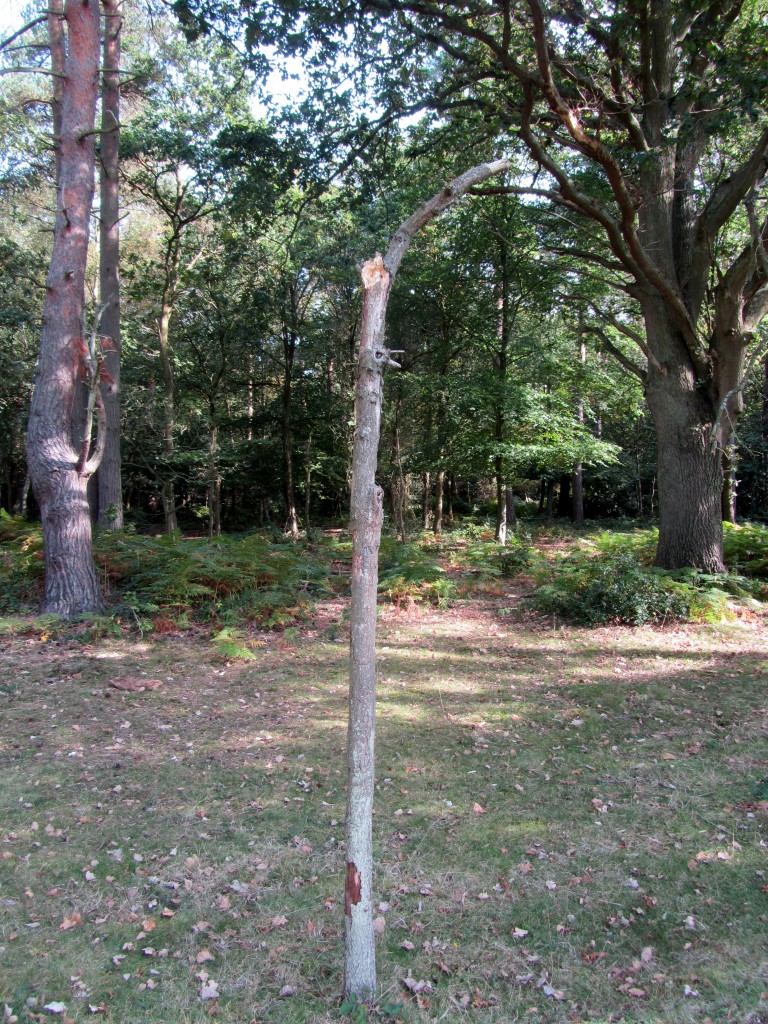




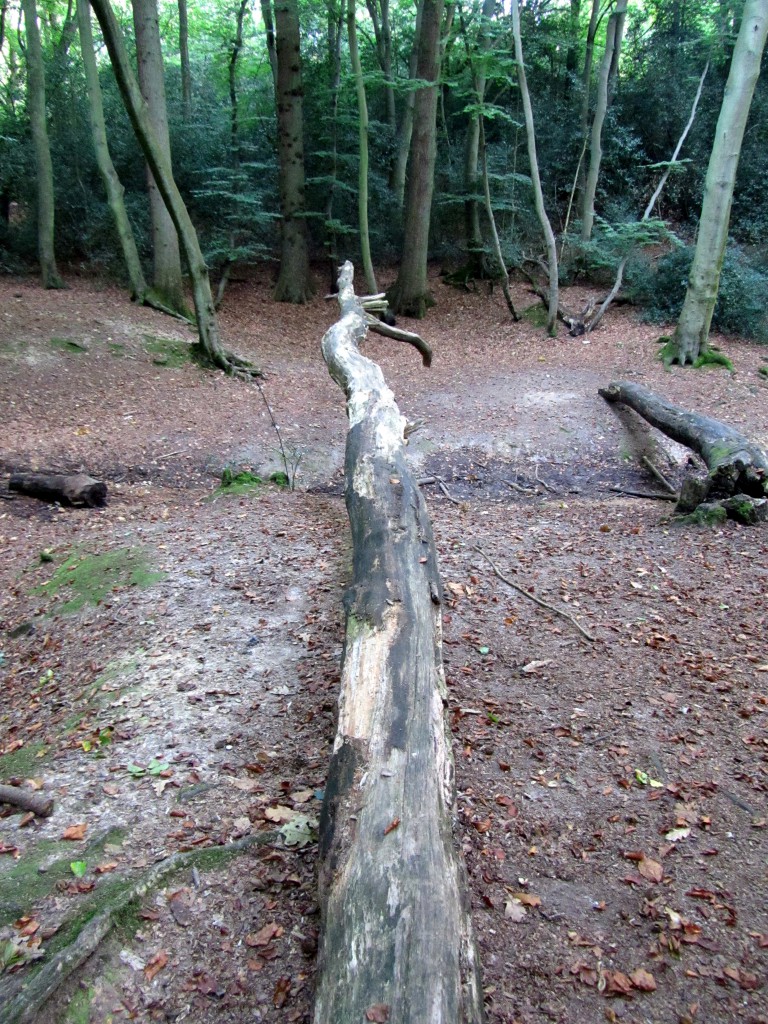
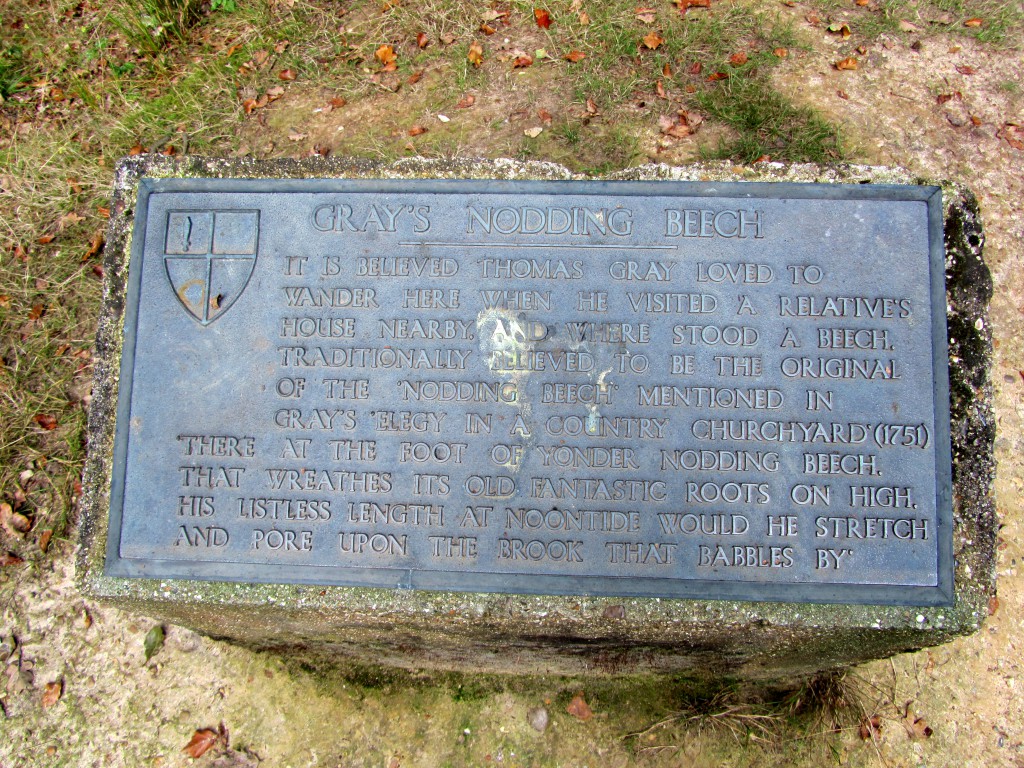
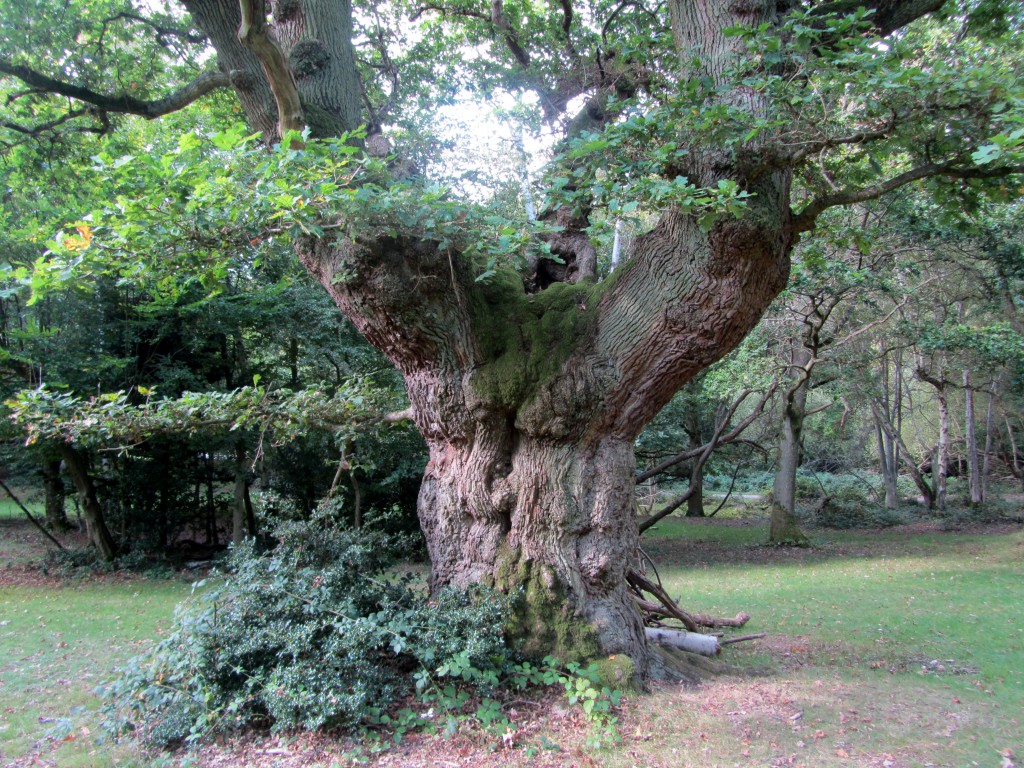





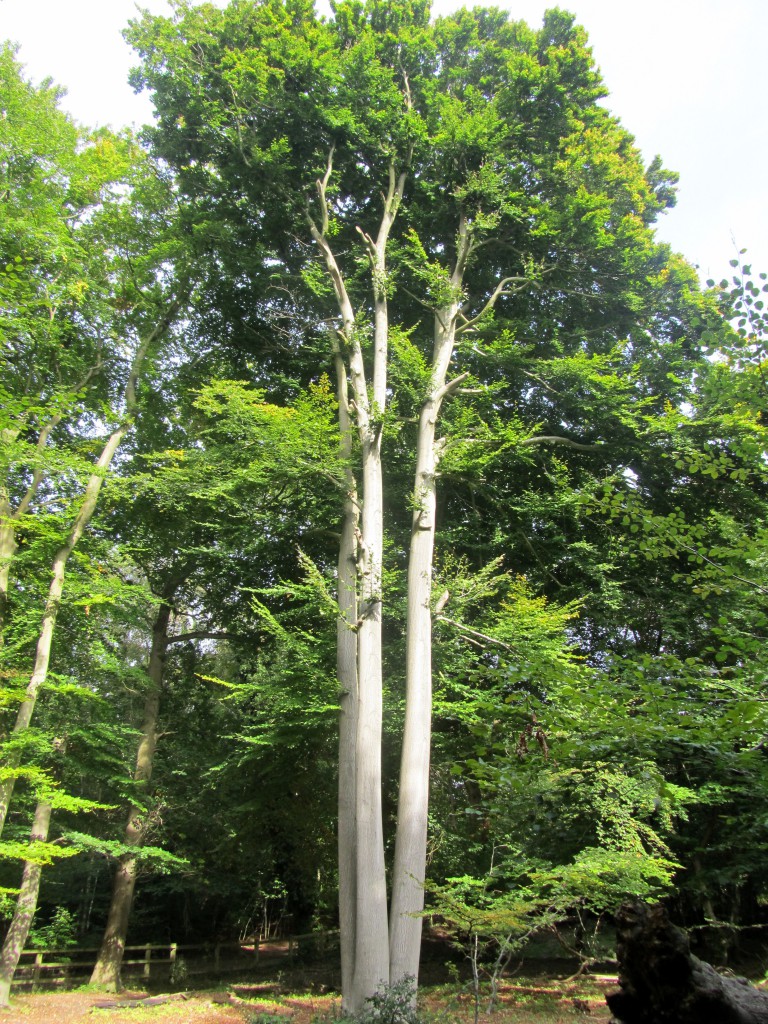
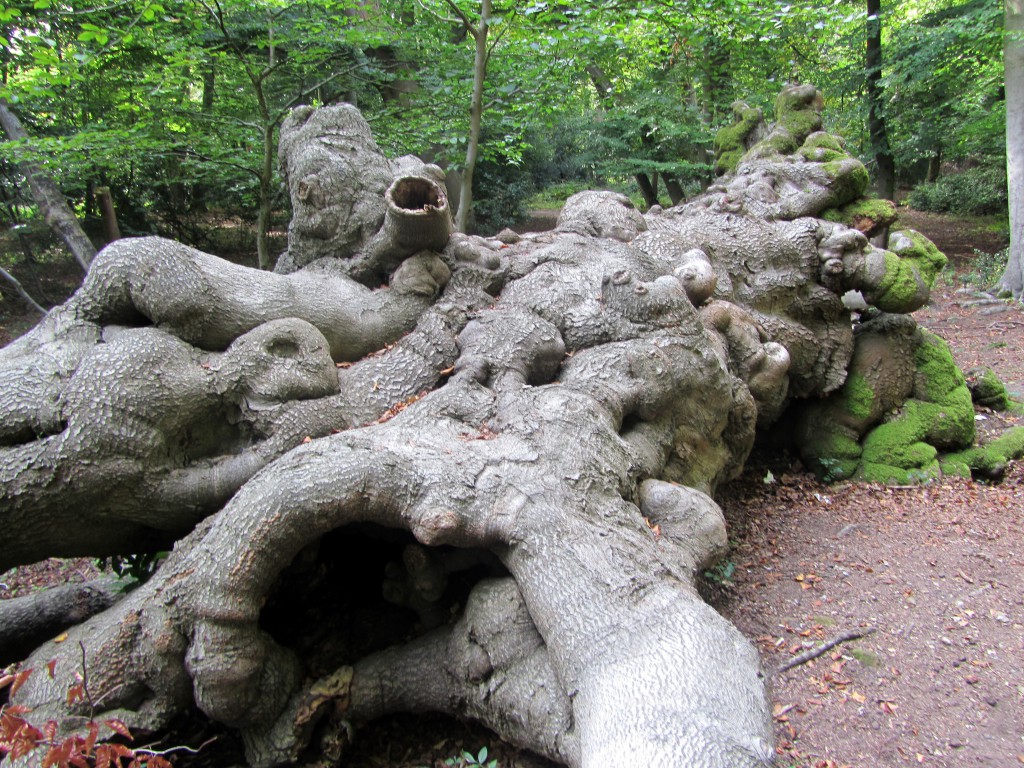


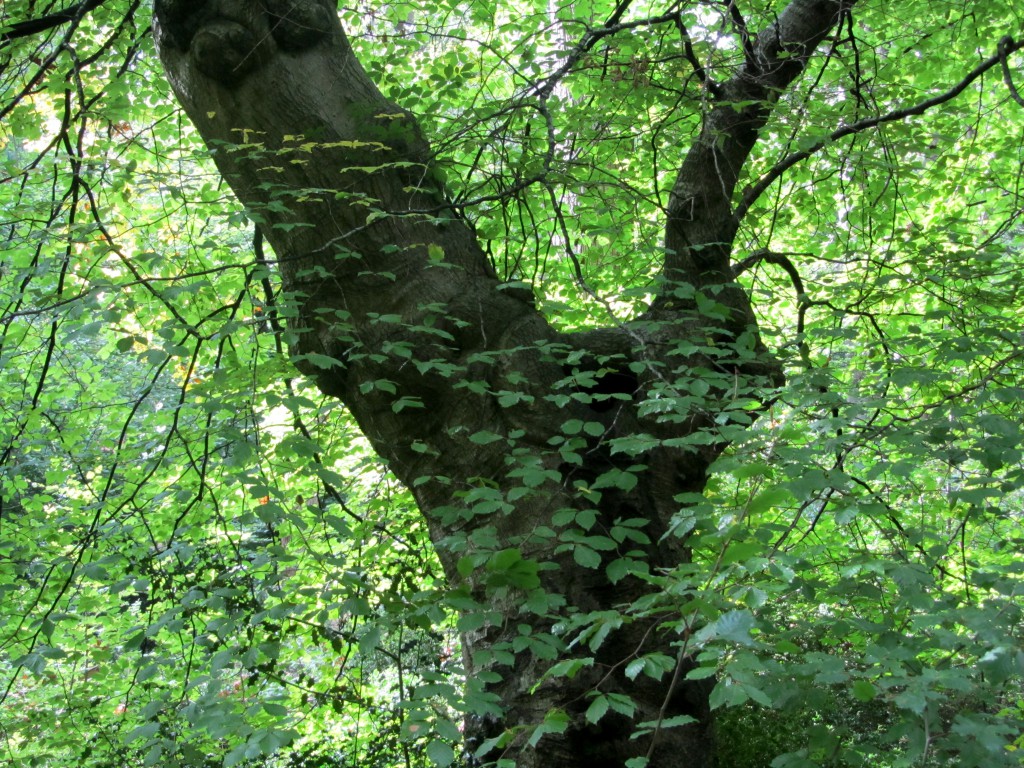
















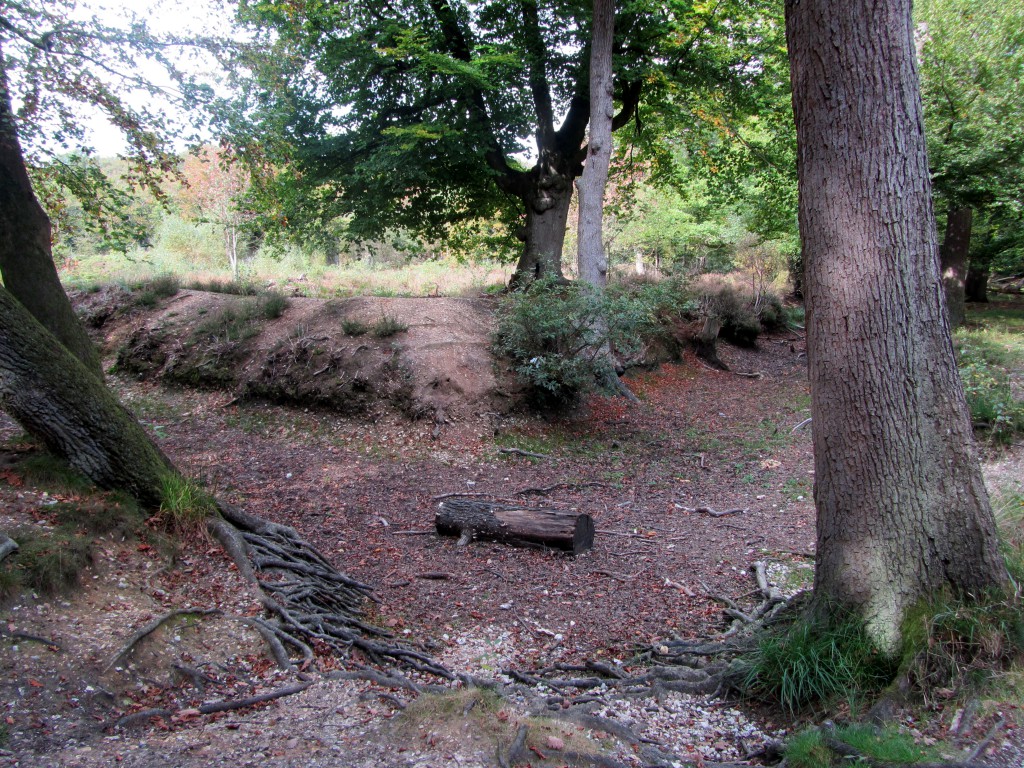










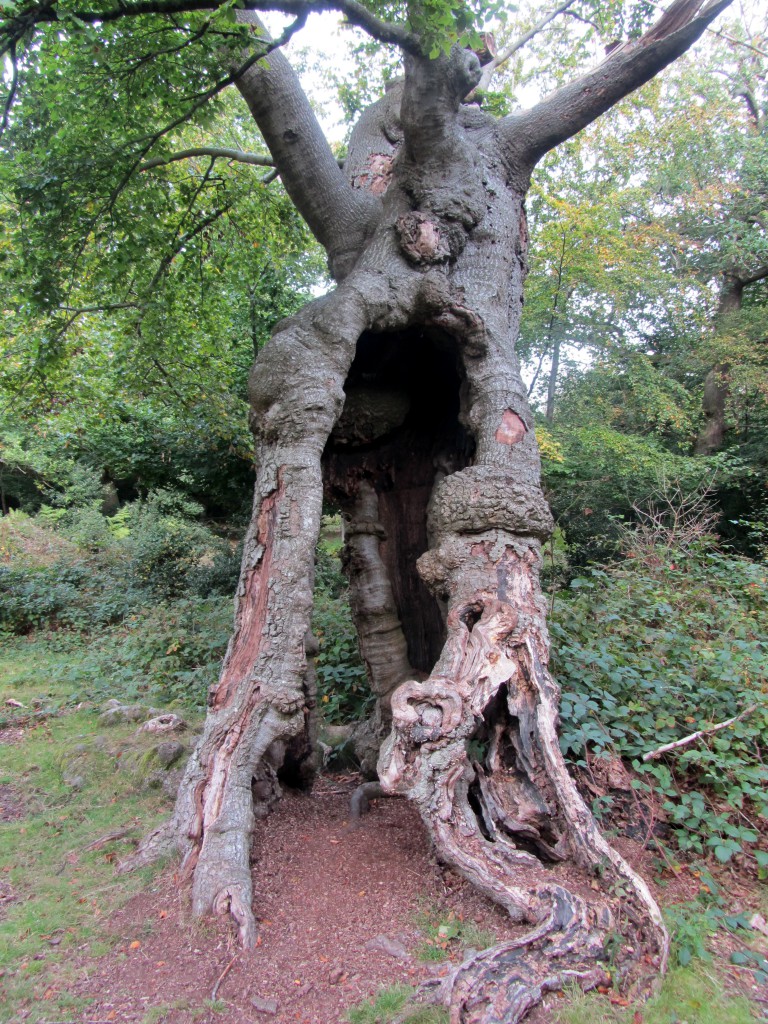





The fallen and embracing trees bring to mind Henry Moore.
There is a grand old beech not far from our house. My father carved his initials on it about 70 years ago and they’re still there.
Thanks for sharing your walk with us.
Yes, they’re like a Moore reclining figure.
I hope you carved your initials on your father’s tree.
Thanks for joining us.